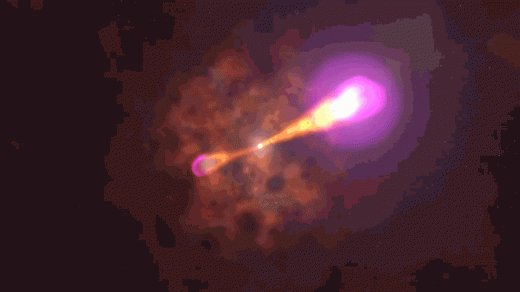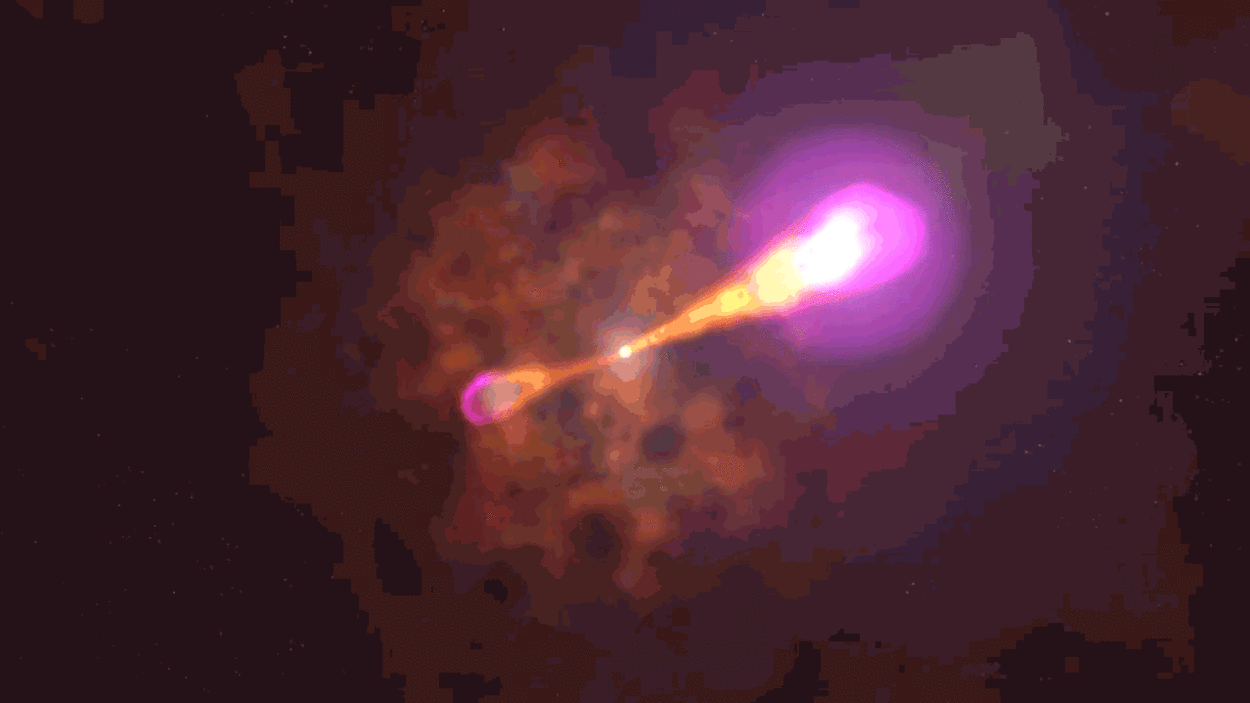NASA discovery reveals an intergalactic gamma-ray burst that could be the brightest of all time
In October, astronomers recorded a singular cosmic explosion across the universe—a pulse of gamma radiation so fantastic that NASA scientists have dubbed it the BOAT, or “brightest of all time.”
It was astonishing and consequential, and like most faraway whims of space and time whose existence finally make themselves known to our corner of the universe—planet Earth—it was also far in the past, long gone from a fleeting moment. The signal from the gamma-ray burst, now named “GRB 221009A,” had been racing through space for 1.9 billion years before reaching the fields of our telescopes.
According to NASA, astronomers believe these kinds of bursts—which can last from a couple of seconds to a few minutes—are “the birth cries of black holes,” formed when a massive star implodes, collapsing under the weight of its own core. The newborn black hole quickly begins to swallow all of its surrounding matter, swirling itself into a flattened disc of frenetic activity. As it does, it emits a series of twin jets, accelerating upwards and downwards from the plane of the disc, blasting particles hurtling at very near the speed of light. And as those jets pierce through the dying star, X-rays and gamma rays are released, flowing into space and starting their long journeys to Earth or wherever else they may go.
Gamma-ray bursts are already among the most violent explosions that occur throughout the universe: In seconds, they can exude as much energy as our sun will in its 12-billion-year lifetime. But astronomers say this one was at the top of its class.
“GRB 221009A was likely the brightest burst at X-ray and gamma-ray energies to occur since human civilization began,” Eric Burns, a physics and astronomy professor at Louisiana State University in Baton Rouge, said in a news report from NASA’s Goddard Space Flight Center. After analyzing roughly 7,000 bursts, captured by NASA’s Fermi telescope and Russia’s Kronus instrument, Burns estimated that events like October’s occur once every 10,000 years.
The burst was so bright that it blinded most human-made instruments placed on Earth-orbiting spacecrafts, which were unable to record direct data. Astronomers from across the globe were left to piece together the puzzle of its true intensity. Ultimately, research from U.S. scientists working with Fermi data, Russian scientists working with Kronus data, and Chinese scientists working with data from their SATech-01 satellite and the Insight-HXMT observatory together proved that the burst was 70 times brighter than any ever seen. Its location was pinpointed by measuring redshift phenomena that causes traveling lightwaves to redden as the universe expands.
Astronomers would typically expect a burst so powerful to herald the dawn of a supernova—when the death of a star erupts with a luminosity so great, it rivals that of an entire galaxy—but scientists have yet to find evidence of such a thing, despite searching with both the James Webb and Hubble telescopes.
However, the burst has already shed light on secrets of the Milky Way galaxy, including the nature of its distant dust clouds, through phenomena involving the gamma-ray jet’s X-ray waves. As the X-rays travel toward us and through the dust clouds, the rays are reflected into so-called light echoes that can illuminate the dust clouds’ location from Earth—some up to 61,000 lightyears away—as well as the size of its dust grains.
Beyond that, gamma-ray burst GRB 221009A begs a more existential exploration. “We think of black holes as all-consuming things, but do they also return power back to the universe?” Michela Negro, an astrophysicist at the University of Maryland, Baltimore County, asked in NASA’s report.
The question might be one of humankind’s biggest black-hole mysteries, and there are no answers yet. But how beautiful is it to think that, just like human beings, those magnificent monsters of the universe dance with the same eternal life cycle—created from the matter of the universe, and in time, returning to it once more?
(19)



